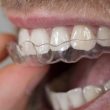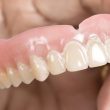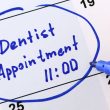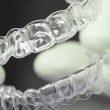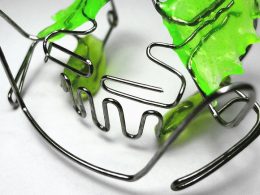Table of Contents
Your new smile is finally here! You might think your Orthodontic journey ends the moment your braces come off, but not quite. To ensure your new smile stays perfect, you still have a little way to go. But it is easy, and the reward is a lifetime of healthy, straight teeth!
Orthodontics refers to the phase after your braces are removed as retention. Everyone who has braces wears a retainer while the teeth, bones and gums adapt to their new position. Teeth naturally want to return to their original place, particularly in the first few months after active treatment has finished. Teeth also move with age, but retainers help reduce the amount of movement and we attempt to keep the teeth where we want them.
Keeping Your Teeth Straight After Braces
Before it is time to remove your braces, your Orthodontist will talk to you about retainers. Retainers ensure the investment and hard work you put into braces, is not undone. You and your Orthodontist will decide on what type of retainer will best suit you. The three options available to most patients include:
- Fixed wire retainers positioned at the back of your teeth on both arches.
- One fixed wire retainer and one removable.
- Removable retainers on both arches.
Usually a day or two before we take the braces off we take a mould of your teeth to make the fixed wire retainers prior to the braces being removed. We apply the fixed wire retainers on the day your braces come off. We take moulds for removable retainers on the same day, so the retainers are ready within 24-48 hours to minimise the time teeth are unretained.
The amount of time you will need to wear a retainer depends on the arrangement of your teeth before you had treatment and how you will measure success. Some people need to wear a retainer for many years, while others do not need them any longer than 12 months. Once you move to nightly removable retainers, it may be every night, alternate nights, or just a few nights per week for maintenance.
People with fixed retainers, often keep them in for many years. Your Orthodontist will assess how likely your teeth are to move and recommend how long and often you should wear your retainer. No one wants to go back to a crooked smile after months of braces, so following the advice of your Orthodontist is critical for long-term success.
It is normal for mild movements to occur due to normal age changes even in adults and most patients are prepared to accept these minor changes and stop wearing their retainers at some stage. However, if you will be concerned with minor changes, then we will be stressing that you continue to wear the retainers intermittently indefinitely, long-life.
Caring for Your New Smile
No doubt you are diligent about brushing your teeth with braces to minimise the chance of staining. You should continue with your good oral hygiene regime after braces. You will keep your smile looking great by brushing and flossing morning and night. But there are a few other things you need to do in the weeks, months and years after your braces are removed:
1- Visit Your General Dentist
Make sure you see a Dentist every six months for a professional clean and check-up. Regular dental appointments are particularly important for those people with a fixed retainer. Your Dentist can check the retainer is not damaged, there is no sign of plaque or decay and will clean around the retainer.
2- Visits to Your Orthodontist
You will wear your retainers full time for the first three months after we remove your braces, to ensure teeth stay where they should. We will book an appointment for you to come into the clinic then so we can check how your teeth and gums are going. If we are satisfied they have stabilised, you can stop wearing your retainers during the day and move to 12 hours every night. Between six and nine months post braces in most children, we will arrange for you to have an X-ray to check the position of the roots and review the wisdom teeth.
3- Checking Your Wisdom Teeth
If you have not had your wisdom teeth removed, the X-ray also tells us how they are going. Sometimes, erupting or impacted wisdom teeth can damage surrounding teeth and undo all the hard work of your braces. This is the reason why we like to see you annually for a quick check-up. Wisdom teeth are unpredictable so keeping a close eye on them allows us to catch any problems before they occur. We will refer you to your Dentist for any wisdom teeth treatment.
4- Caring for Your Removable Retainers
Removable retainers need a little attention to keep them looking good and working properly.
There are two types of removable retainers, wire plates and clear retainers. Wire retainers have an acrylic base that sits at the roof of the mouth and a wire at the front of the teeth.
Clear retainers are made of thin, clear plastic that wrap around the teeth, like a mouth guard. Most people choose clear retainers over wire because they are more comfortable to wear and almost invisible.
All retainers need removing to eat, drink, play sport and brush your teeth. When you take them out, use the container to store them rather than a tissue or napkin as they can be easily lost or thrown away. Store your retainers away from your pets as many retainers have been destroyed by dogs chewing them.
Keep the retainer clean and stain-free by rinsing or brushing after every meal. Use a drop of dishwashing liquid and a gentle toothbrush to get in the nooks and crannies of the retainer to keep it clean and germ-free. Do not use regular toothpaste as it is too abrasive and can scratch the surface of the clear plastic. Never use hot water to clean your retainer as this can change the shape. The microwave and dishwasher will also destroy a retainer. Do not eat or drink with your retainer in as food and beverages can leave permanent stains.
You should not feel any pressure if you wear your retainer consistently. If at any point you feel your retainer is tight when you put it in, wear it for longer than you would usually, or preferably for 24 hours. If you lose or break your retainer, call the clinic as soon as possible to arrange a new one. Some teeth move quickly and undo the hard work of braces.
Whenever you come in to see your Orthodontist, please remember to bring your removable retainers with you. We will check they still fit and are not damaged or worn. Fitting your retainers is one of the best indicators we have for judging whether any teeth have moved since we removed your braces.
5- Caring for Your Fixed Retainers
Just give the back of your teeth a good clean around the retainer and use dental floss to clean under the wire and between the teeth. A fixed retainer is ideal for keeping teeth in place without having to think about putting removable retainers in and out. Fixed retainers can last for years without you even noticing they are there. However teeth can still move slightly even with fixed retainers. Occasionally chewing on something hard may bend the fixed retainer and this could cause a tooth to move even though it remains attached to the teeth.
If the retainer breaks or you suspect that it has been bent, make an appointment to see your Dentist as soon as possible to have it fixed, particularly if it is less than 12 month since your braces came off. Any delay can cause teeth to shift out of alignment and undo your hard work.
Remember, if you have any queries about your retainer or your teeth after your braces are off, do not hesitate to contact the clinic. Do not be shy about coming back to see us each year, we like to admire our handiwork!
“Some People Need to Wear a Retainer for Life, While Others Do Not Need It for More Than 12 Months. Everything Depends on the Case”.
DENTAL TIP
Are You Facing an Unaffordable Quote for Dental Treatment?
Are you thinking of getting Cosmetic Dentistry or Dental Implants in Venezuela? The rising cost of dental care in many countries is driving the dental tourism movement as people seek more affordable dental work abroad. If you are facing an unaffordable quote for dental treatment in your home country, DENTAL VIP could be a much cheaper alternative with savings of 60% or more.
Every year thousands of international patients visit Caracas to take advantage of high quality healthcare at affordable prices. Dental procedures in Venezuela are on par with treatment provided in any “developed” countries of the world. The cost, however, is significantly less.
At DENTAL VIP we offer a wide range of World Class Dental Treatments such as Dental Implants, Crowns and Bridges, Smile Design, Dental Veneers, Ceramic Braces and Zygomatic Implants; among others.
Furthermore, we are available to assist you with transfer and accommodation options while visiting Caracas for dental care. Contact us today and make your next treatment in Venezuela!


